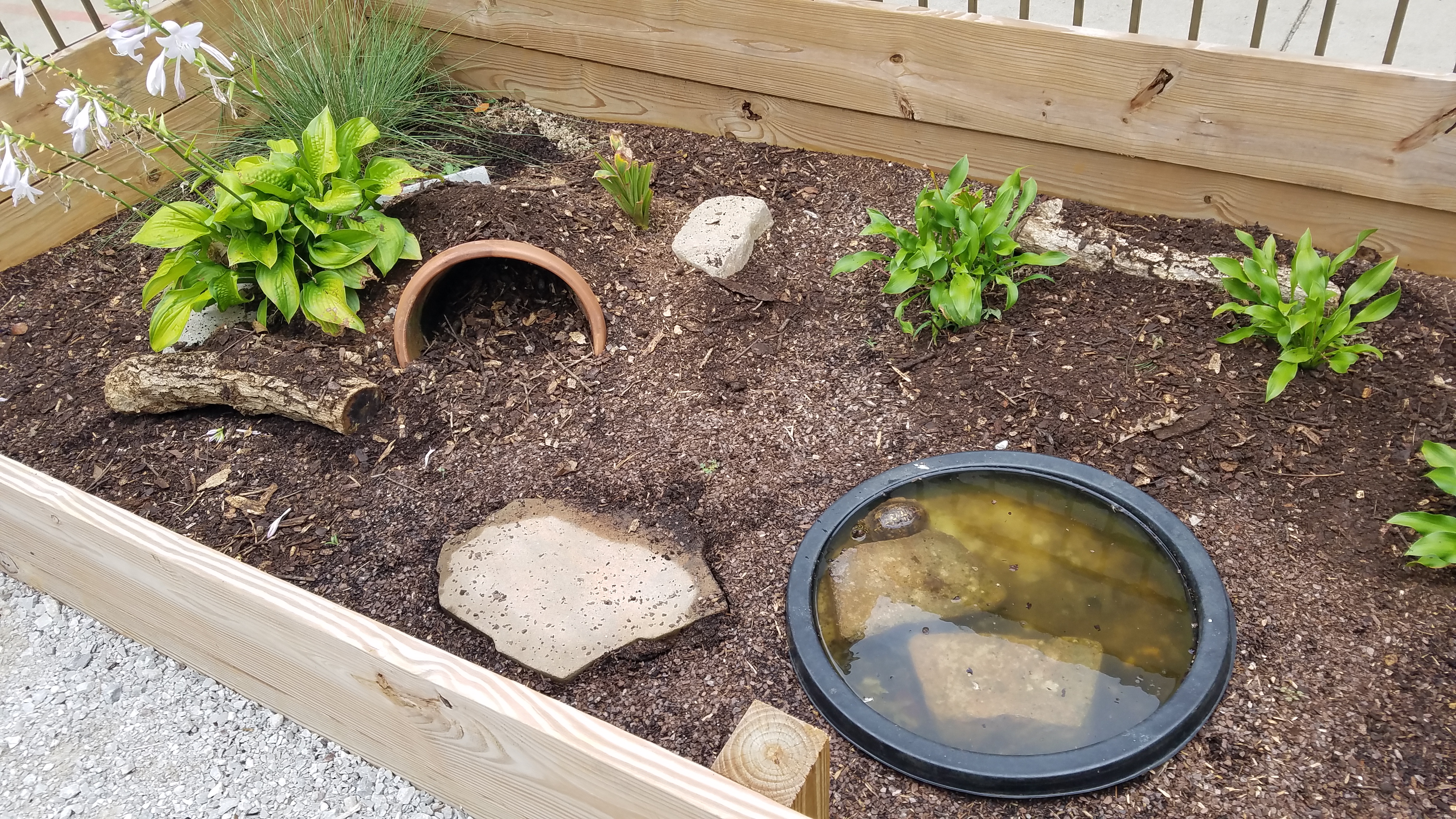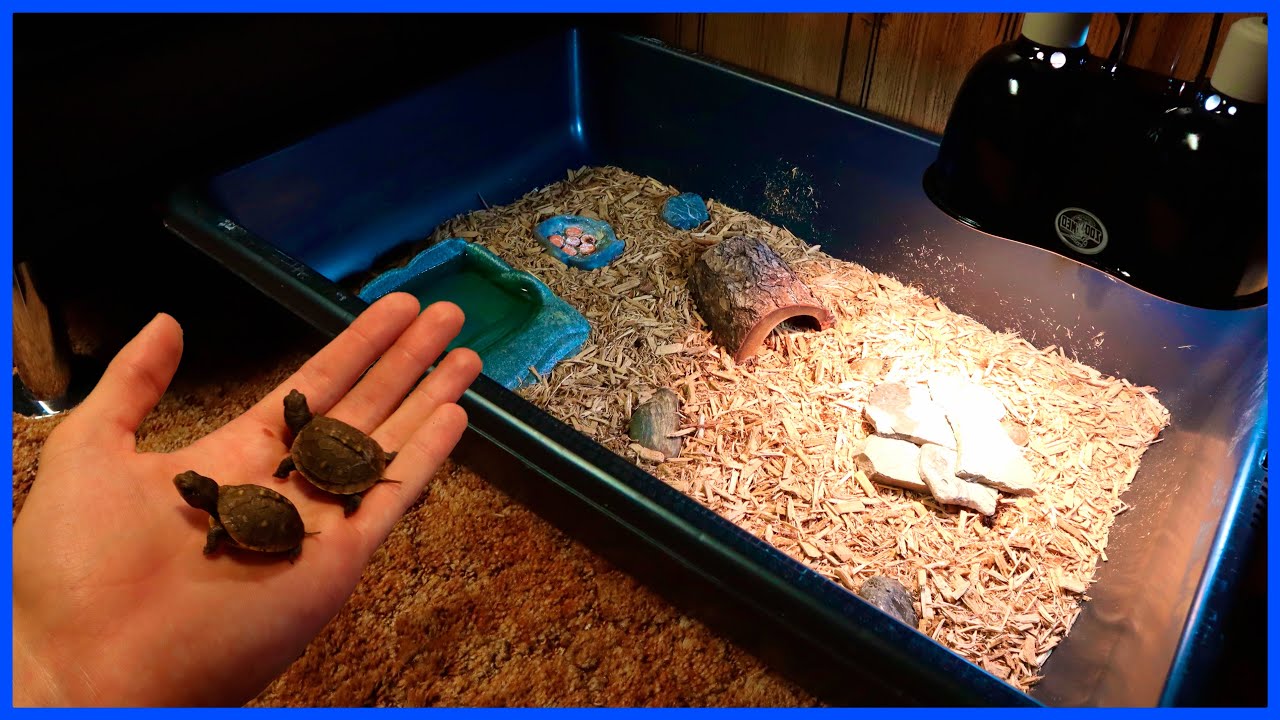To make a habitat for a box turtle, create an outdoor enclosure with a secure fence and natural elements like plants, rocks, and water sources. Ensure the habitat has a hiding spot and proper heating and lighting for the turtle’s well-being.
Providing a balanced diet and regular cleanings are essential for the turtle’s health and happiness. Building a suitable habitat for your box turtle will require time, effort, and attention to detail, but it will create a safe and enriching environment for your pet.
By following these steps, you can ensure that your box turtle thrives in its new habitat.
Choosing The Right Enclosure
When it comes to creating a habitat for a box turtle, choosing the right enclosure is crucial for their well-being. Box turtles require a specific environment that mimics their natural habitat, providing them with the space and conditions they need to thrive.
Size And Space Requirements
Box turtles need ample space to move around, explore, and exhibit natural behaviors. The enclosure should be large enough to accommodate their size and activity level. A general rule of thumb is to provide at least 3-4 square feet of floor space per turtle.
Indoor Vs. Outdoor Enclosures
When deciding between an indoor or outdoor enclosure, consider the climate and available space. Indoor enclosures can be controlled for temperature and humidity, but outdoor enclosures offer natural sunlight and fresh air. Both options can be suitable, as long as they meet the specific needs of the box turtle.
Creating The Ideal Environment
To create the ideal environment for a box turtle habitat, ensure the enclosure includes a mix of substrate, hiding spots, and a shallow water dish. Provide a balanced diet of vegetables, fruits, and insects. Maintain proper temperature and humidity levels to promote the turtle’s well-being.
Regularly clean and maintain the habitat for a healthy and happy box turtle.
Temperature And Humidity Control
Lighting And Uvb Requirements
Substrate And Ground Cover
Designing A Turtle-friendly Habitat
Designing a turtle-friendly habitat is essential to ensure the well-being and happiness of your box turtle. By providing the right elements in their environment, you can create a space where they can thrive and exhibit natural behaviors. Here are some key factors to consider when designing a habitat for your box turtle:
Providing Hiding Places And Shelter
Box turtles are known to seek shelter and hide at various times throughout the day. Creating hiding spots within their habitat is crucial for their mental and physical well-being. This can be achieved by incorporating rock piles, hollow logs, or plant cover to provide them with secure spaces to retreat to when they feel the need.
Adding Water Features
Box turtles require access to water for drinking and soaking. Incorporating a shallow water dish or a small pond within their habitat will fulfill this need. Ensure that the water feature is easily accessible and has a gentle slope to allow them to enter and exit comfortably. Regularly monitor and clean the water to maintain its quality and prevent the spread of disease.
Incorporating Natural Elements
Introducing natural elements such as native plants, leaf litter, and soil will enrich the habitat and provide a more natural environment for your box turtle. These elements will not only enhance their living space but also stimulate natural behaviors, like foraging and exploring. Research and select plants that are safe for your turtle and will thrive in the habitat.

Credit: www.alabamawildlife.org
Feeding And Nutrition
To create a suitable habitat for a box turtle, it’s essential to provide a balanced diet that includes a variety of vegetables, fruits, and protein sources. Incorporating calcium and vitamin supplements is also crucial for their overall health and well-being.
Additionally, ensuring access to clean water and maintaining proper temperature and humidity levels are key factors in creating an ideal environment for box turtles.
Box turtles are omnivorous and eat a variety of foods in the wild. As a pet owner, it’s important to provide a balanced and nutritious diet to ensure the health and longevity of your box turtle. In this section, we’ll discuss the box turtle’s diet and provide tips for feeding in captivity.Understanding The Box Turtle’s Diet
Box turtles are opportunistic feeders and will eat a variety of foods in the wild. Their diet consists of insects, worms, snails, slugs, fruits, and vegetables. In captivity, it’s important to replicate their natural diet as closely as possible. Here’s a breakdown of the box turtle’s diet:- Protein: 50-60%
- Fruits and vegetables: 30-40%
- Calcium-rich foods: 10%
Tips For Feeding In Captivity
Feeding your box turtle a balanced and nutritious diet is essential for their health. Here are some tips to keep in mind:- Offer a variety of foods: Box turtles need a variety of protein, fruits, and vegetables to thrive. Offer a mix of insects, worms, fruits, and vegetables to ensure they’re getting a balanced diet.
- Feed appropriate portion sizes: Overfeeding can lead to obesity and health problems. Feed your box turtle an appropriate portion size based on their size and age.
- Provide calcium supplements: Box turtles need calcium for healthy bones and shell development. Offer calcium supplements in the form of cuttlebone or calcium powder.
- Use a shallow dish for water: Box turtles need access to water for hydration and to soak. Use a shallow dish for water to prevent drowning.
- Avoid toxic foods: Some foods can be toxic to box turtles, such as avocado, rhubarb, and chocolate. Avoid feeding these foods to your box turtle.
Maintenance And Cleaning
Box turtles make great pets, but they need a habitat that is clean and well-maintained. Proper cleaning and maintenance of your box turtle’s habitat are essential to ensure their health and well-being. In this section, we’ll cover the two main aspects of maintaining a box turtle habitat: regular cleaning and sanitization, and monitoring and maintaining habitat conditions.
Regular Cleaning And Sanitization
Regular cleaning and sanitization of your box turtle’s habitat are crucial to prevent the buildup of harmful bacteria and other pathogens. Here are some tips to keep your box turtle’s habitat clean:
- Remove any uneaten food, feces, and debris daily to prevent the buildup of harmful bacteria.
- Change the water in your turtle’s water bowl daily to prevent the growth of harmful bacteria.
- Wipe down the habitat’s walls and surfaces with a reptile-safe disinfectant weekly to kill any remaining bacteria and pathogens.
Monitoring And Maintaining Habitat Conditions
Monitoring and maintaining the conditions in your box turtle’s habitat are essential to ensure their health and well-being. Here are some tips to help you keep your box turtle’s habitat in good condition:
- Monitor the temperature and humidity levels in your turtle’s habitat regularly to ensure they are within the appropriate range for your specific species of box turtle.
- Ensure your turtle has access to a basking area with a heat lamp to help regulate their body temperature.
- Provide your turtle with a variety of hiding spots and climbing structures to keep them stimulated and entertained.
By following these tips for cleaning and maintaining your box turtle’s habitat, you can help ensure their health and well-being for years to come.

Credit: m.youtube.com
Health And Wellness
When it comes to the health and wellness of your box turtle, creating a suitable habitat is crucial. By providing the right environment and implementing a vet care plan, you can ensure your pet stays healthy and happy. Recognizing signs of stress or illness and having a vet care plan in place are essential aspects of maintaining your box turtle’s well-being.
Recognizing Signs Of Stress Or Illness
It’s important to be able to recognize the signs of stress or illness in your box turtle. Some common indicators of stress or illness include:
- Loss of appetite
- Lethargy
- Abnormal feces
- Shell abnormalities
- Labored breathing
If you notice any of these symptoms, it’s important to consult with a reptile veterinarian as soon as possible to address any potential health issues.
Creating A Vet Care Plan
Establishing a vet care plan for your box turtle is essential for maintaining its health and wellness. This plan should include regular check-ups with a reptile veterinarian, as well as a protocol for addressing any health concerns that may arise. Additionally, it’s important to ensure your box turtle’s habitat is clean and well-maintained to prevent potential health issues.
Conclusion And Enjoying Your Box Turtle
To ensure your box turtle thrives, provide hiding spots, UV lighting, a varied diet, and clean water. Maintain proper humidity levels and temperature for a happy and healthy turtle. Enjoy observing your box turtle in its well-equipped habitat.
Bonding With Your Box Turtle
Interacting with your box turtle regularly helps strengthen the bond between you both. Offer hand-fed treats to encourage trust and familiarity.
Final Tips For Habitat Maintenance
Regularly check and clean the habitat to maintain a healthy environment for your box turtle. Ensure proper humidity levels and temperature consistency.

Credit: www.wikihow.com
Conclusion
Creating a suitable habitat for your box turtle is crucial for its well-being. By providing a safe enclosure with proper substrate, temperature, and hiding spots, you can ensure a happy and healthy turtle. Remember to include a balanced diet and regular monitoring to maintain the habitat.
Happy turtle-keeping!






Leave a Reply